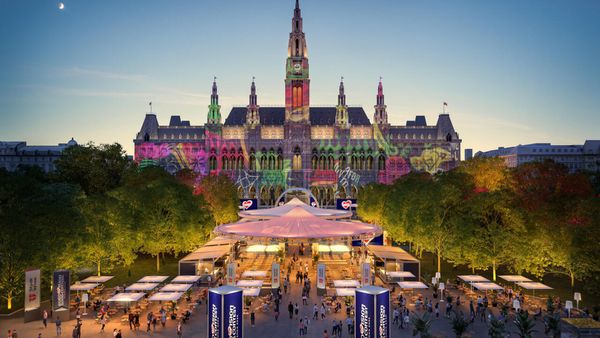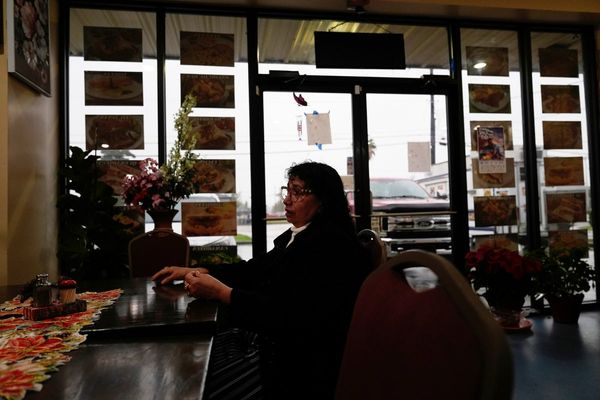
Forty years ago this week, the Greenpeace vessel Rainbow Warrior was sunk by two bombs planted by French secret service operatives. The bombing, which killed photographer Fernando Pereira, was intended to halt Greenpeace’s campaign against French nuclear testing at Moruroa Atoll. Instead, it galvanised the global environmental movement and left a lasting stain on France’s international reputation.
On the night of 10 July 1985, the Rainbow Warrior was moored in Auckland, New Zealand, preparing to lead a flotilla of protest vessels to Moruroa, in French Polynesia, where France had been conducting nuclear tests for decades.
Greenpeace’s mission in the Pacific was clear: to bear witness, document and physically disrupt the tests, amplifying the voices of Pacific islanders and anti-nuclear campaigners who had long decried the impact of radioactive fallout on the environment and human health.
The Rainbow Warrior had recently helped relocate Marshall Islanders affected by United States nuclear testing, further cementing its role as a symbol of peaceful protest.
'Opération Satanique'
Shortly before midnight, two underwater bombs detonated against the hull of the vessel. The first explosion prompted an evacuation, but as crew members returned to assess the damage, a second blast tore through the vessel.
Fernando Pereira, a Portugese-Dutch photographer with Greenpeace, who had gone below deck to retrieve his camera equipment, drowned as the ship rapidly sank.
The attack was quickly revealed to be the work of French agents, part of a covert operation code named Opération Satanique, which was authorised at the highest levels of the French government.

The fallout was immediate and severe. New Zealand authorities arrested two French operatives, Dominique Prieur and Alain Mafart, who were later convicted of manslaughter and sentenced to 10 years’ imprisonment.
However, under diplomatic pressure, they served less than two years, confined to a French military base in Polynesia before being repatriated.
Greenpeace report reveals France’s double standards in dealing with Russia
France was forced to apologise and pay reparations to New Zealand, Pereira’s family and Greenpeace, and French Defence Minister Eugène Charles Hernu resigned in disgrace.
The operation’s planning and execution became the subject of intense scrutiny. Among the team of agents involved was Gérard Royal, the brother of future French presidential candidate Ségolène Royal.

While Gérard Royal has never been formally charged, investigations by established French media including Le Monde, Les Echos and Le Figaro, as well as statements from former officials, have alleged his direct involvement in the operation, fuelling controversy in France for decades.
Ségolène Royal has repeatedly distanced her family from the affair, but the allegations remain a footnote in the saga of the Rainbow Warrior.
Opposite effect
Far from silencing Greenpeace, the bombing had the opposite effect. Public outrage surged in New Zealand and internationally, with donations and support for Greenpeace flooding in.
According to Mads Christensen, executive director of Greenpeace International, the sinking of the Rainbow Warrior "proved what many in Greenpeace said and are still saying – namely, that first they ignore you, then they laugh at you, then they fight you and then you win. It basically showed that that kind of resistance against Greenpeace does not work. It has the opposite effect. It builds strength".
"It was a move that caused quite a lot of damage to the reputation of France, and it backfired massively"
Mads Christensen, executive director of Greenpeace International
The organisation quickly dispatched another vessel to Moruroa, ensuring the protests went ahead as planned.
The Rainbow Warrior became a potent symbol of resistance, and the incident is widely credited with strengthening the anti-nuclear movement in the Pacific and beyond.
"It is much more than just a ship that was bombed by the French," Christensen told RFI.
"They tried to silence a movement, an opposition to their plans to do nuclear testing in the Pacific. And the aftermath showed that Greenpeace just grew stronger, as did the movement."
Wake-up call for France as climate experts push for new action on emissions

In the years since, Greenpeace has expanded its operations, becoming one of the world’s best known environmental groups.
The lessons of the Rainbow Warrior have shaped its approach: a stubborn commitment to non-violent direct action, meticulous security protocols and a determination to expose environmental wrongdoing, regardless of the risks.
Today, the Rainbow Warrior rests on the seabed off New Zealand’s coast, transformed into a living reef.
Intimidation and attacks
Meanwhile, the repression of environmental activists persists in new forms.
According to a statement issued by Greenpeace on 9 July, Greenpeace USA and Greenpeace International faced a "record-breaking" Strategic Lawsuit Against Public Participation (SLAPP) in the US, launched by oil and gas company Energy Transfer, resulting in a €563 million fine.
Worldwide, according to NGO Global Witness, one environmental defender is killed every two days. The UN Special Rapporteur on Environmental Defenders also expressed concern over the disproportionate use of force during environmental protests, including in France.
According to Greenpeace, attacks on activists – whether physical, legal, political or media-driven – "reflect a clear intent to silence those who challenge exploitative and destructive models".
Fighting for the Ocean: Paul Watson on activism, repression and hope
"The numerous attempts to intimidate non-violent activists underscore the urgent need to guarantee freedom [of expression], protect whistleblowers and defend all those working for climate justice, the preservation of life and fundamental rights,” said Jean-François Julliard, executive director of Greenpeace France.
Forty years after the Rainbow Warrior attack, the organisation says its "determination remains undiminished".
Throughout the summer, activists from the organisation's local groups are mobilising across France to pay tribute to activists, calling on the public to join the Time to Resist campaign, the aim of which is to "ignite a global wave of resistance to push back against billionaires’ greed, legal bullying and attacks on our right to protest and speak up for the planet – and for each other".







